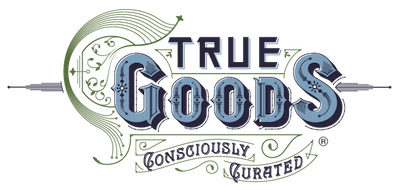
It’s a hot summer day, filled with sniffing, running and swimming at the dog park. On your way home, that lovely wet-dog smell is sneaking forward toward the driver’s seat, all the way from the creature in the far back. No question about it, Fido needs a bath. But what are you using to make sure your four-legged best friend is actually clean?
Some dog shampoos have toxins in them that you never even thought to look out for and cleaning your pup doesn’t end with a quick splash in the tub. Making sure his coat is shiny and healthy involves a lot more than just shampoo – you also have to think about what he’s eating. Not to worry, here’s a quick guide of top tips for a truly “clean” dog. Just remember the two D’s: diet and detox.
Let’s start with diet.
Eating a species-appropriate diet, which provides the nutrients your dog needs, cannot help but impact the quality of his skin and hair. While it's true that AAFCO has established minimum nutritional requirements for dogs and addresses which ingredients are appropriate, the organization does not address the quality of ingredients pet food producers include in their formulas.
Meeting their basic requirements to stay healthy, and providing optimal nutrition in a species appropriate manner, are two entirely different issues. A healthy, species-appropriate dog diet should include:
- High quality protein – muscle meat, not pieces or parts
- Moderate level of animal fat
- High levels of EPA and DHA
- High moisture content
- A few fresh cut veggies and a bit of fruit (mimics prey's stomach contents)
- No potatoes or other starches
Now, let’s talk detoxing (shampoo that is).
You may be someone who sensibly tries to avoid applying potential toxins to your own skin, and keeps your home free and clear of them to the fullest extent possible. We’ll assume then that you also show your favorite canine the same loving kindness when choosing their products. Unfortunately, just as your personal care products may contain toxic ingredients...so can your pet's (think shampoos and soaps).
So what to do? Check the labels! Do the ingredients in your dog's shampoo require specific disposal or contain any of these potentially dangerous chemicals?
- 1,4-diaminobenzene
- Artificial colors (i.e., blue 1,2,4, disperse blue 1; green 1,2,3; red 4,9,17,19,22,33,40; yellow 5,6,8; disperse yellow 3 - will be shown as D&C or FD&C, e.g., FD&C Red No.6)
- Benzalkonium Chloride and Benzethonium Chloride (synthetic germicides, long term use may affect immune system, cause asthma)
- BHA & BHT
- Coal Tar Dyes
- Diethanolamine (DEA)
- DEA-Cocamide & Lauramide & Oleamide condensates
- MEA/Acetame
- Sodium lauryl sulfate
- Dioxins
- Fragrances (Parfum) - unless from a truly all natural/non-synthetic source
- Methylisothiazolinone (MIT)
- Methicone
- Triethanolamine (TEA)
- Sodium Lauryl/Laureth Sulfate (SLS/SLES)
- Paraphenylenediamine/P-phenylenediamine
- PEG-compounds (1,4-dioxane, propylene glycol, and other ingredients with the letters "eth,” e.g., polyethylene glycol)
- Propylene Glycol (used in anti-freeze!)
- Phthalates
- Petrolatum or Mineral Oil (can be contaminated with polycyclic aromatic hydrocarbons)
- Sodium Hydroxide
- Triclosan
Although this list is lengthy, it represents only a portion of the harmful ingredients, toxins, and carcinogens that can be present in off-the-shelf shampoo products for dogs. To make sure you’re using only the safest products for your pets, shop True Goods’ consciously curated options or make your own from scratch.
~ Special thanks to Karen Rosenfeld, who authored one of the original posts from which this has been adapted, on July 6, 2013, and to Dr. Karen Becker, whose post on HealthyPets.Mercola.com added valuable insights. ~
